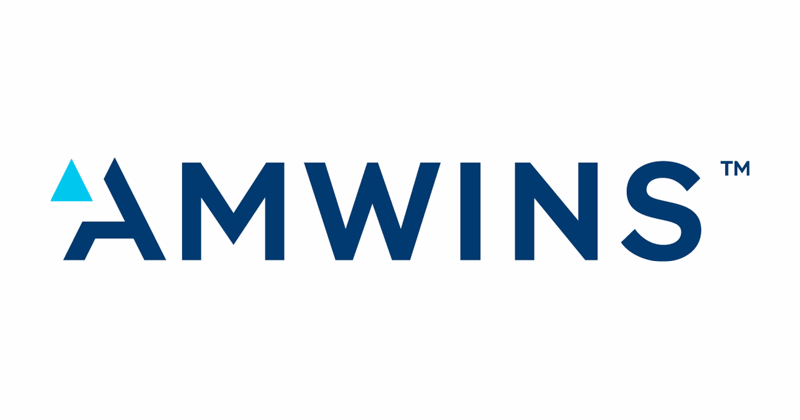
As of January 1, 2025, several states have updated their minimum car insurance requirements.Virginia, Utah, North Carolina and California have all increased the amount of liability coverage one must carry to drive legally.Some consumers will not see a dramatic increase in their insurance prices, especially if they already buy more than the state minimum car insurance requirements.However, if you usually buy the lowest amount of liability coverage, you will probably notice a significant price increase.This is critical information for those of us who live on a tight budget!As always, the experienced team of licensed insurance agents at Einsurance is ready to help consumers understand and navigate these changes.
This article offers unbiased, readable information to help you understand updated auto insurance minimums.Keep reading to learn about:Let’s begin with a look at each state and their updated requirements.State-by-State Car Insurance Updates in 2025Here, we explore the four states with new minimum insurance requirements.California Car Insurance Law ChangesIn 2025, California doubled and tripled the amount of liability coverage needed to drive legally, with And consumers should be aware that under this bill, auto insurance prices will increase again in the future.California’s minimum liability coverage went from “15/30/5” to “30/60/15.” That means a driver must have liability coverage that pays up to:This state’s minimum car insurance requirements will increase again in 2035.At that time, the minimum amounts of required liability insurance will increase by $20,000 and $40,000 for bodily injury or death of one person and all persons, respectively, and by $10,000 for property damage.New totals will be “50/100/25,” a decade from now.Utah’s Car Insurance Law ChangesUtah’s 2025 car insurance law changes are .
In short, Utah residents must now buy liability coverage of “30/65/25.” That is:This is a smaller, but still meaningful, update to car insurance laws in UT.Previously, they were, “25/65/15.”And remember, Utah is a , which also requires drivers to carry Personal Injury Protection (PIP) insurance of at least $3,000.This has not changed in 2025.North Carolina’s New Auto Insurance MinimumsNorth Carolina’s new liability requirements are significant.
NC residents must now carry We’re talking about:Drivers must also maintain some coverage for uninsured / underinsured motorists.Virginia’s New Auto Insurance Requirements in 2025Virginia state minimum car insurance requirements are also increasing, to “50/100/25.” Virginia lawmakers passed this measure in 2021, with .VA drivers will now need:This is another meaningful increase in coverage, which was “30/60/20” in the past.Now that we’ve covered state-by-state car insurance updates, we can move on to a better understanding of liability coverage on your auto policy.What is Liability Coverage? How Does it Work?Liability coverage may be the most expensive part of your auto policy.Its purpose is to cover you, the owner or driver of a vehicle, from paying for harm you might cause to other people or your property.What is Covered by the Liability Portion of my Auto Insurance Policy?Every state has slightly different laws, with a few nuances.But in general, the liability portion of your auto insurance would help pay for:Issues Not Covered by Liability on an Auto Policy“Liability only” policies cover only the state minimum requirements to drive legally in your state.
They do not pay for:Many Lienholders Require More than a Liability-Only PolicyIf you make a payment on your vehicle, you will need more than a liability-only policy.That’s because the bank or credit union needs to know they’ll be repaid if your vehicle is stolen or totaled.Many insurers offer or similar packages that will include coverage for collision, theft and so on.How Liability Coverage WorksLiability coverage will only pay up to the coverage limits.
That’s why we’re seeing car insurance law changes in 2025.Thanks to , improving technology, increasing medical costs and a generally litigious society — that is, Americans are quick to sue for a fast payout — car accidents cost more than ever.And while modern autos are often built with new safety features, they’re also faster, and in some cases heavier, than vehicles in our past.Ultimately, they can cause more damage, which costs even more to repair.Remember, the liability part of your insurance will only ever pay up to the policy limits.Sometimes these insurance concepts are best illustrated with a story, so let’s imagine a scenario now.Liability Claims & Limits: Traci’s StoryTraci is a middle-aged mom on her way home from work in Virginia.
She’s driving her older commuter vehicle, a 2005 Nissan Altima, valued at $3,000.This car has been paid off a long time, and she only maintains the state minimum car insurance requirements, of “50/100/25.”Somewhere ahead, a deer dashes on to the road.Just in front of Traci, a brand-new Toyota Camry, valued at $40,000, slams on their brakes.
Traci rear-ends the vehicle quite hard, jostling the family inside and causing considerable damage to both cars, and injuring Traci’s neck.The drivers pull off to the side of the road and exchange insurance information.While no one in the Camry seems badly hurt, they head off to the emergency room, just in case.Traci’s liability insurance will cover:It will not cover:Ultimately, Traci’s Nissan is totaled, because repair costs are more than the value of the car.The Camry is repaired and the family’s ER visit is covered.
They don’t get to sue Traci in court, because they didn’t suffer any monetary losses.When Liability Coverage Falls ShortNow, imagine that story differently.Imagine all four people in the Escalade are badly hurt.They all need ambulance rides, immediate surgeries, ongoing medical care and physical therapy.In that case, Traci’s $100,000 liability may or may not be enough coverage.The Camry family will be able to sue Traci for their losses.
And ultimately, that’s why state minimum auto insurance laws are changing now.Why State Minimum Auto Insurance Requirements are ChangingAs we mentioned above, issues like inflation and rising repair costs, more advanced vehicles, heavier and faster vehicles, and a “sue happy” society, all lead to financial ruin when drivers don’t have enough liability insurance.Even with the minimum requirements covered, the losses of others can still lead to a lawsuit for at-fault drivers.The Impact of New Insurance Laws on PremiumsIf you live in CA, VA, UT or NC, your auto insurance premiums will almost certainly increase.The only exceptions may be if you already purchase more than the state minimum of insurance or have many policies with one insurer.However, you can think of it this way: you’re paying a bit more for insurance, but you have more coverage in case of an accident.The chance that you’ll get sued and lose everything is smaller.That’s the “upside.” On the downside, the increasing costs of insurance may bring some financial hardship to consumers, especially in the challenging economy we’re enduring in January 2025.
Some experts believe these increasing costs may lead people to drive without insurance.Will Increasing Auto Insurance Prices Lead to More Uninsured Drivers?It’s too early to tell, but as experienced auto insurance agents, we believe more drivers may take the risk of driving uninsured.Remember, this is both illegal and immoral, not a chance worth taking.You’re better off trying to save some money on your car insurance, and at , we might be able to help.Ways to Save on Car InsuranceShop AroundIf your state is changing auto insurance requirements, there will be a lot of shuffling in the industry.That means certain insurers are looking for customers just like you! Whether you’re an inexperienced , a senior driver, own a new car or an old one, there’s probably a company out there looking specifically for your business.Try our handy online quoting tool, to see for yourself.We aim to match consumers with the right insurers.Consider a Price-Per-Mile Policy“Pay per mile” car insurance policies are a good fit for certain people.
If you only drive a few thousand miles per year, or if you have several vehicles and some stay garaged all the time, this might be a good choice.Price-per-mile auto policies might be ideal if you:Lower Your Deductibles on Full Coverage PoliciesLiability-only policies do not include deductibles.However, if you have several vehicles and some full coverage policies, you can save some money by increasing your deductibles.Of course, higher deductibles mean increased out-of-pocket costs after an accident.That means you should be comfortable paying any new deductible.So, if you don’t keep $5,000 in the bank, don’t select a $5,000 deductible! Also, remember that lienholders — banks, credit unions, etc.
— usually stipulate drivers must buy a policy with a certain deductible.It may be $500, $1,000, and so on.You must keep whatever insurance your lienholder describes in your auto loan contract.Update your Policy with New DiscountsSome insurers offer various discounts for teachers, nurses, insurance agents, good students, and so on.
Contact your insurance agent to ask about any possible discounts you might be missing, especially if you made career changes recently and didn’t think to inform your insurer.Whittle Down the Bells and WhistlesRead your auto insurance policy closely.Ask yourself, “Do I need each of these coverages?”For instance, if you own three vehicles, maybe you don’t need rental car coverage on all of them.And if you’re part of an auto club like AAA, maybe you don’t need roadside assistance coverage.
Then, call your insurer to talk about removing these extra costs.Take a Driving CourseAnd finally, consider taking a defensive driving class.These courses can help you reduce your price for car insurance by 10% or more over a period of a few years.They’re worth the time and money, especially now that you can complete these courses online.Learn More at Einsurance.comWe hope you enjoyed our discussion on the changing auto insurance requirements in 2025.
We enjoyed writing it! Be sure to check out the rest of for more unbiased content for consumers.
Publisher: EINSURANCE








